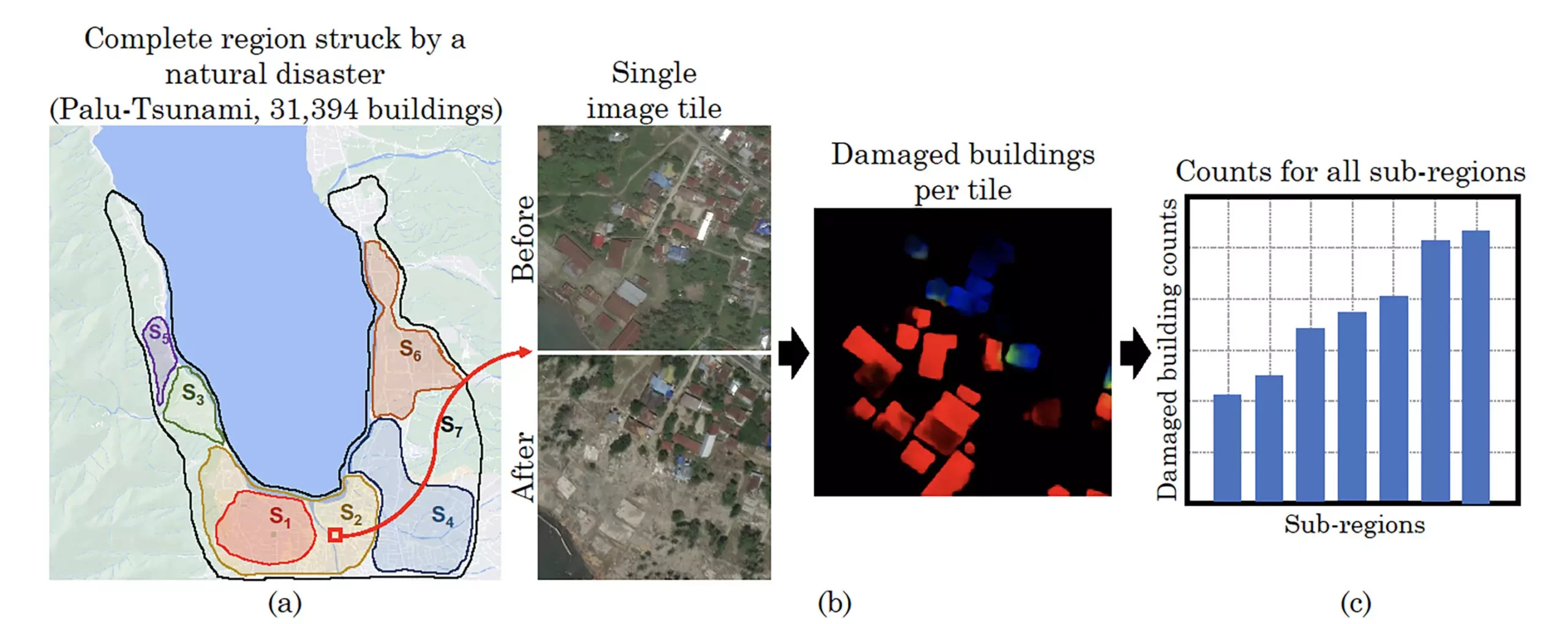A recent breakthrough by a team of computer scientists at the University of Massachusetts Amherst has led to the development of an AI framework, DISCount, that has the capability to quickly detect damaged buildings in crisis zones and accurately estimate the size of bird flocks. This innovative framework combines the speed and data-crunching power of artificial intelligence with human analysis to provide reliable estimates from large collections of images.
The creation of DISCount arose from the collaboration between UMass Amherst and organizations such as the Red Cross and ornithologists at Colorado State University and the University of Oklahoma. The goal was to develop a computer vision tool that could count damaged buildings in crisis situations and accurately estimate bird flock sizes using weather radar data. Lead author Gustavo Pérez, along with other researchers including Subhransu Maji and Dan Sheldon, sought to address the challenges faced in both projects by leveraging computer vision technology.
The team encountered difficulties with traditional computer vision models, which lacked the accuracy required for their applications. To overcome these limitations, they proposed a novel approach that involved integrating human analysis with AI capabilities. The idea was to optimize the strengths of both methods to achieve more reliable and precise results.
DISCount is a versatile framework that can be integrated with existing AI computer vision models. It operates by utilizing AI to analyze large data sets, such as extensive image archives, to identify specific subsets of data for human examination. For example, the AI could pinpoint key images that showcase the extent of building damage in a region, allowing human researchers to conduct detailed hand-counts on a smaller scale. The framework then extrapolates these findings to estimate the overall impact across the entire area. Additionally, DISCount provides a confidence interval to aid researchers in assessing the accuracy of their estimates.
The implementation of DISCount has yielded impressive results, outperforming random sampling methods for the tasks at hand. One of the key advantages of this framework is its compatibility with various computer vision models, enabling researchers to select the most suitable AI approach for their specific requirements. Moreover, DISCount empowers researchers to make informed decisions regarding the reliability of their estimates, thereby enhancing the overall quality of their analyses.
The development of the AI framework DISCount represents a significant advancement in the fields of disaster response and wildlife conservation. By marrying the capabilities of artificial intelligence with human expertise, this innovative tool offers a powerful solution for rapidly detecting damaged buildings in crisis zones and accurately estimating the size of bird flocks. As researchers continue to explore the potential applications of DISCount, the future looks promising for leveraging AI technology to address critical societal challenges.


Leave a Reply